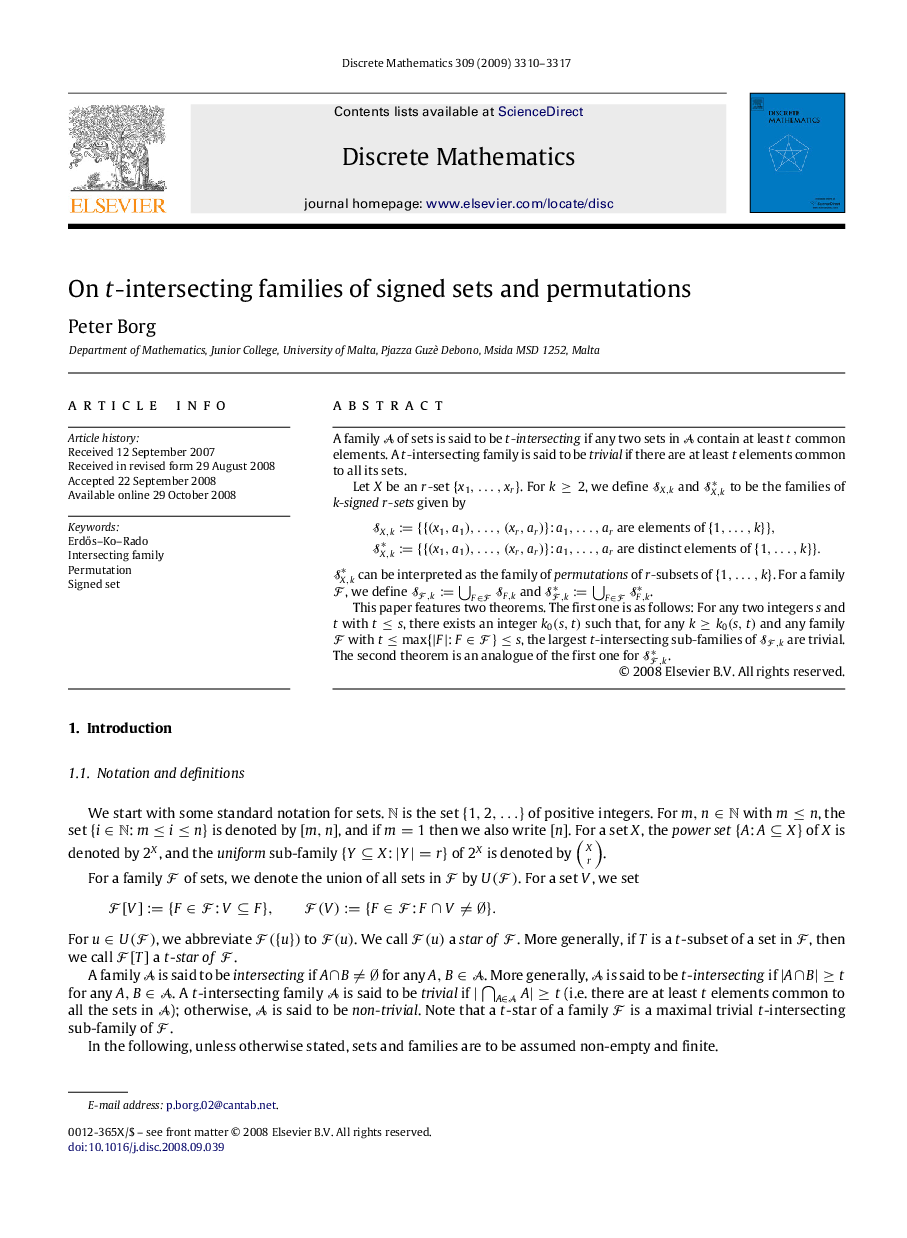| Article ID | Journal | Published Year | Pages | File Type |
|---|---|---|---|---|
| 4649841 | Discrete Mathematics | 2009 | 8 Pages |
A family AA of sets is said to be tt-intersecting if any two sets in AA contain at least tt common elements. A tt-intersecting family is said to be trivial if there are at least tt elements common to all its sets.Let XX be an rr-set {x1,…,xr}{x1,…,xr}. For k≥2k≥2, we define SX,kSX,k and SX,k∗ to be the families of kk-signed rr-sets given by SX,k≔{{(x1,a1),…,(xr,ar)}:a1,…,ar are elements of {1,…,k}},SX,k≔{{(x1,a1),…,(xr,ar)}:a1,…,ar are elements of {1,…,k}},SX,k∗≔{{(x1,a1),…,(xr,ar)}:a1,…,ar are distinct elements of {1,…,k}}.SX,k∗ can be interpreted as the family of permutations of rr-subsets of {1,…,k}{1,…,k}. For a family FF, we define SF,k≔⋃F∈FSF,kSF,k≔⋃F∈FSF,k and SF,k∗≔⋃F∈FSF,k∗.This paper features two theorems. The first one is as follows: For any two integers ss and tt with t≤st≤s, there exists an integer k0(s,t)k0(s,t) such that, for any k≥k0(s,t)k≥k0(s,t) and any family FF with t≤max{|F|:F∈F}≤st≤max{|F|:F∈F}≤s, the largest tt-intersecting sub-families of SF,kSF,k are trivial. The second theorem is an analogue of the first one for SF,k∗.
